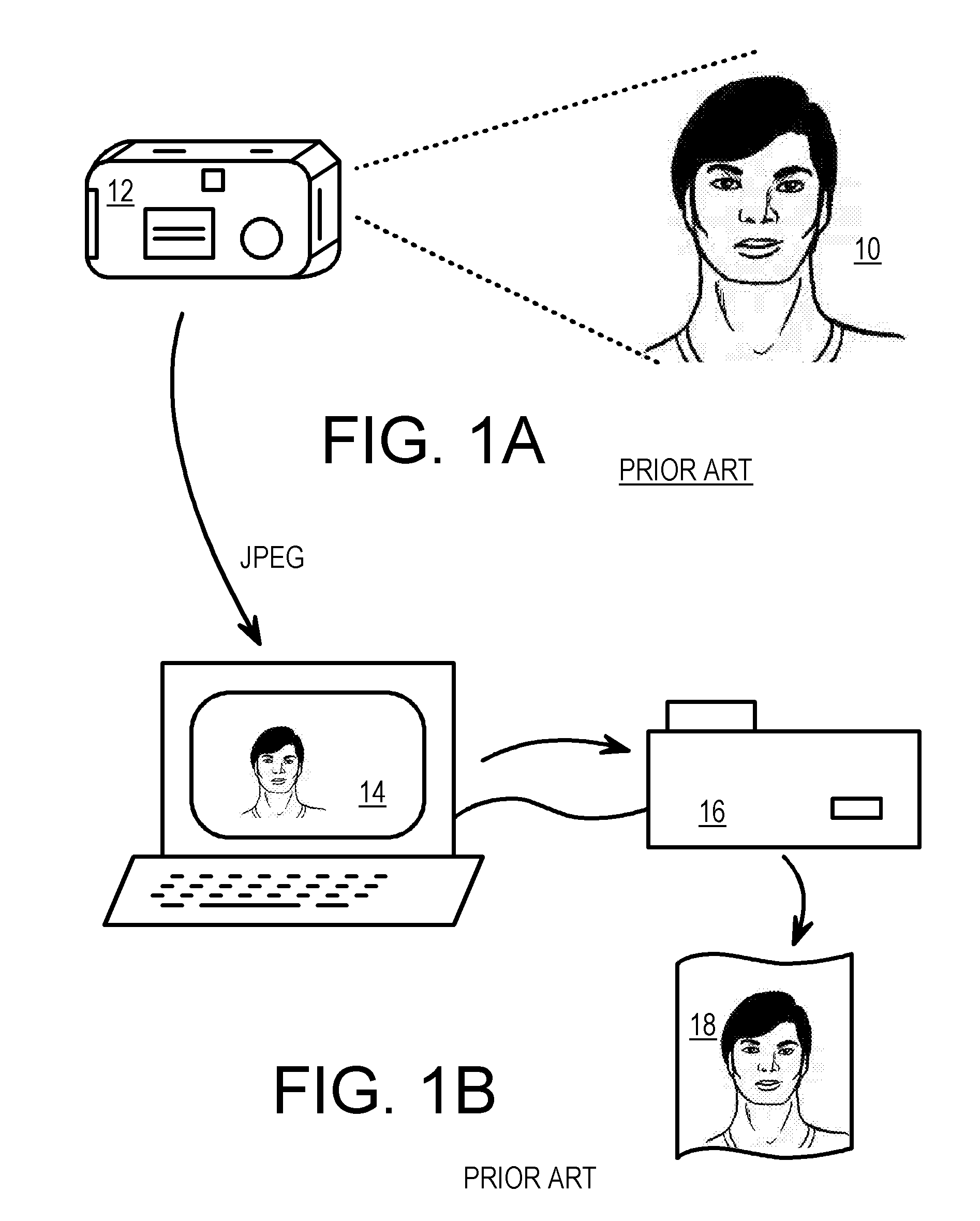Custom 3-D Milled Object with Vacuum-Molded 2-D Printout Created from a 3-D Camera
a 3-d object and 3-d camera technology, applied in the field of 3d object capture, can solve problems such as registration problems of molded images
- Summary
- Abstract
- Description
- Claims
- Application Information
AI Technical Summary
Benefits of technology
Problems solved by technology
Method used
Image
Examples
Embodiment Construction
[0024] The present invention relates to an improvement in 3D prototyping. The following description is presented to enable one of ordinary skill in the art to make and use the invention as provided in the context of a particular application and its requirements. Various modifications to the preferred embodiment will be apparent to those with skill in the art, and the general principles defined herein may be applied to other embodiments. Therefore, the present invention is not intended to be limited to the particular embodiments shown and described, but is to be accorded the widest scope consistent with the principles and novel features herein disclosed.
[0025]FIG. 3 is a diagram highlighting 3D / 2D capture, 3D milling, and 2D printing and vacuum forming over the 3D milled shape. Laser range-finding or other techniques may be used by 3D camera 30 to capture geometry details of 3D object 10. The geometry details captured by 3D camera 30 are loaded into geometry file 40, which may be in...
PUM
| Property | Measurement | Unit |
|---|---|---|
| shape | aaaaa | aaaaa |
| color | aaaaa | aaaaa |
| heat-formable | aaaaa | aaaaa |
Abstract
Description
Claims
Application Information
 Login to View More
Login to View More - R&D
- Intellectual Property
- Life Sciences
- Materials
- Tech Scout
- Unparalleled Data Quality
- Higher Quality Content
- 60% Fewer Hallucinations
Browse by: Latest US Patents, China's latest patents, Technical Efficacy Thesaurus, Application Domain, Technology Topic, Popular Technical Reports.
© 2025 PatSnap. All rights reserved.Legal|Privacy policy|Modern Slavery Act Transparency Statement|Sitemap|About US| Contact US: help@patsnap.com



